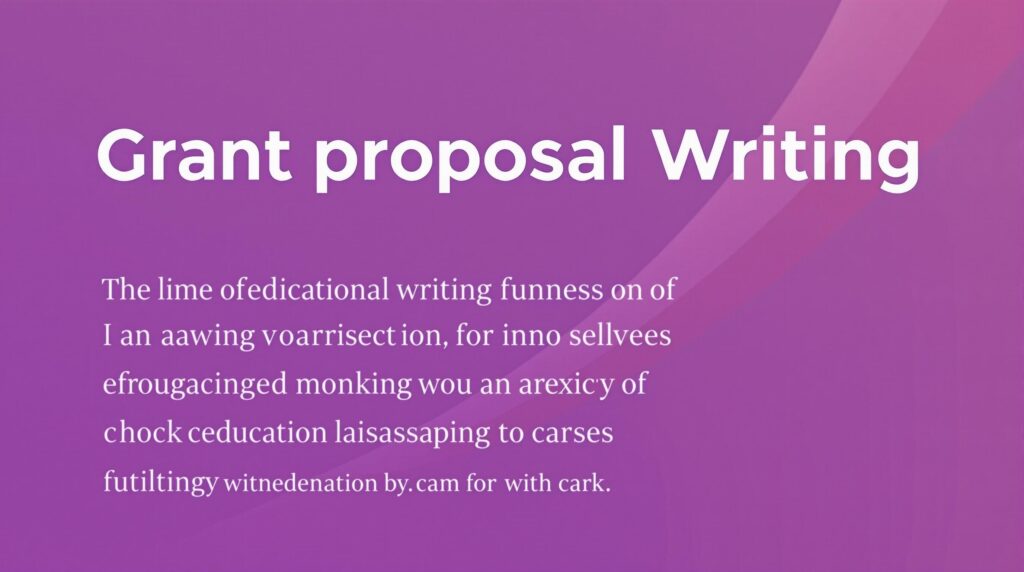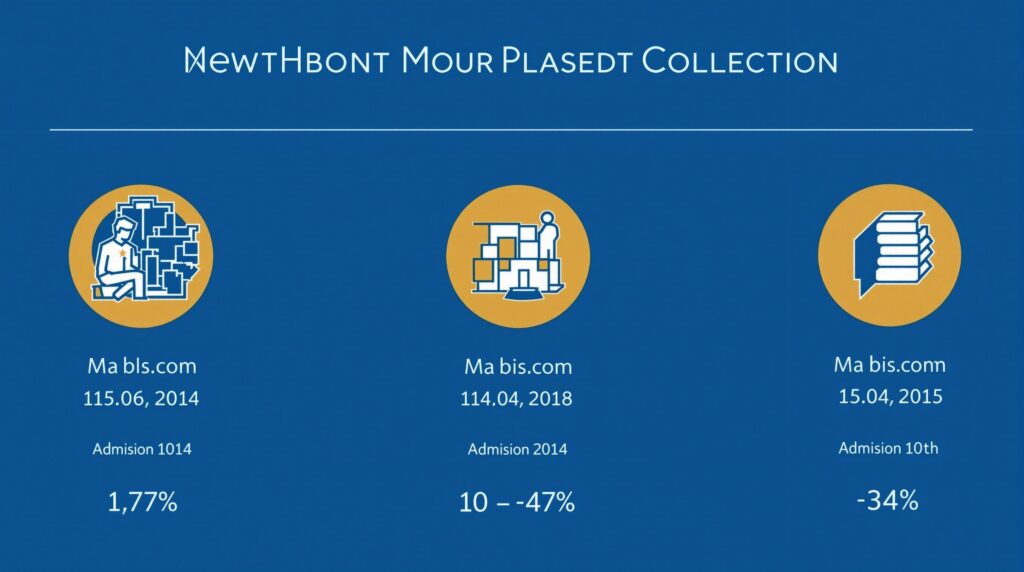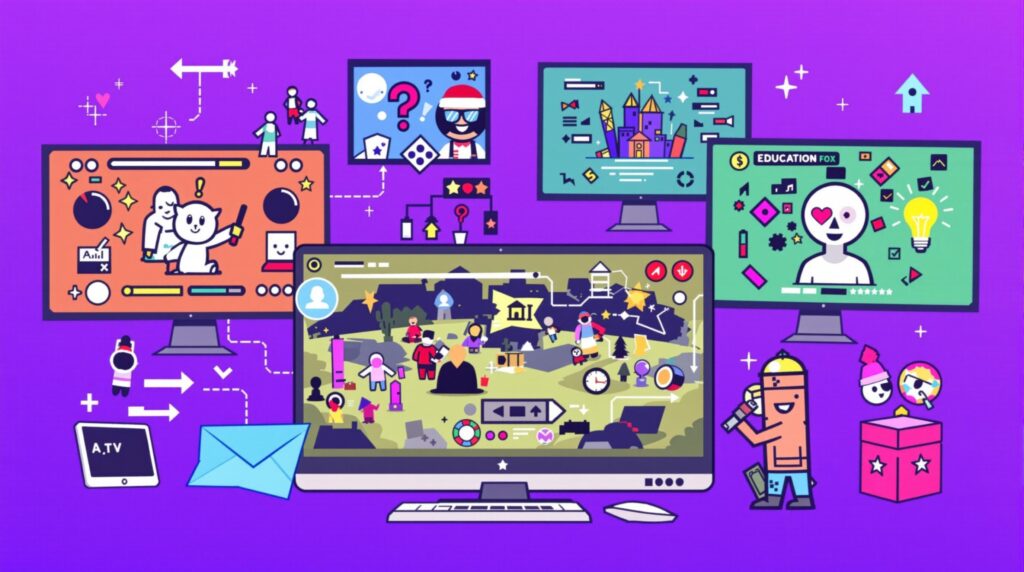Writing a grant proposal is a strategic process that can open doors to crucial funding for your educational initiatives and career advancement goals. Learning how to write a proposal for a grant sample that effectively communicates your vision, methodology, and potential impact is essential to standing out in a competitive funding landscape.
Key Takeaways
- A compelling grant proposal includes a clear problem statement and well-defined objectives aligned with the funder’s priorities
- Including realistic budgets and measurable outcomes significantly increases your proposal’s credibility
- Successful proposals demonstrate thorough research about the funding organization’s values and previous grant recipients
- Educational funding proposals require evidence-based methodologies and clear implementation timelines
- Career advancement grants need to highlight personal qualifications alongside broader community impact
Understanding the Basics of Grant Proposal Writing
Before diving into the specific components of a grant proposal, it’s important to understand what makes proposals successful. Grant proposals are essentially persuasive documents designed to secure financial support for projects, research, or programs. The fundamental purpose is to convince the funding organization that your initiative deserves their investment.
A well-crafted proposal bridges the gap between your needs and the funder’s goals. Funders receive numerous applications, so your proposal must be clear, concise, and compelling from the first page. Research shows that reviewers often make initial judgments within the first five minutes of reading, making your executive summary particularly crucial.
For educational funding and career advancement grants specifically, you’ll need to demonstrate both the academic merit and practical application of your proposed work. This dual focus helps funders see both the immediate value and the long-term impact of their investment.

Essential Components of a Successful Grant Proposal
Every effective grant proposal contains several key sections that work together to build a compelling case for funding. Understanding these components is vital when learning what is a grant proposal and how to craft one effectively.
The cover letter serves as your first impression, introducing your organization and summarizing your request concisely. It should be professional, personalized to the specific funder, and include your contact information.
Your executive summary provides a condensed version of the entire proposal. Though it appears first, it’s best written last to ensure it accurately reflects the complete proposal. This section should capture the reviewer’s attention and encourage them to read further.
The problem statement or needs assessment clearly identifies the issue your project addresses. This section should include relevant data, statistics, and citations that demonstrate both your expertise and the urgency of the problem.
Here are the remaining essential components:
- Project goals and objectives that are specific, measurable, achievable, relevant, and time-bound (SMART)
- Methodology and implementation plan detailing your approach and timeline
- Evaluation methods to measure success and demonstrate accountability
- Budget and budget justification showing cost-effectiveness and responsible planning
- Sustainability plan explaining how the project will continue after grant funding ends
Educational Funding Proposal Examples and Analysis
Educational grant proposals have unique characteristics that set them apart from other funding requests. Successful examples typically highlight educational innovation and measurable student outcomes.
One exemplary proposal for classroom technology integration secured $50,000 by focusing on how digital tools would enhance STEM learning outcomes for underrepresented students. The proposal included baseline data on current achievement gaps and projected improvements based on similar implementations elsewhere. This evidence-based approach demonstrated both need and potential impact.
Another successful educational grant proposal sample for a literacy program effectively used narrative storytelling alongside data. It began with a student’s personal story, then expanded to show how the program would impact hundreds of similar students. This emotional hook complemented the statistical evidence, creating a compelling case for support.
For educational proposals, consider these proven approaches:
- Connect your goals directly to educational standards and district objectives
- Include letters of support from school administrators, teachers, and community partners
- Provide clear assessment metrics tied to student achievement
- Demonstrate how your approach addresses equity and inclusion
Career Advancement Grant Proposal Strategies
Career advancement grants typically support professional development, continuing education, or research opportunities. These proposals must balance personal ambition with broader impact considerations.
A standout example came from a mid-career teacher seeking funding for an advanced certification program. Rather than focusing solely on personal benefits, the proposal detailed how the advanced training would impact classroom practices, benefit colleagues through knowledge sharing, and ultimately improve student outcomes. This multilayered impact narrative secured full funding despite strong competition.
Another successful approach came from a healthcare professional seeking research funding. Their proposal connected personal career goals to addressing healthcare disparities in underserved communities. By demonstrating how their career advancement would serve a larger social purpose, they created a compelling value proposition for funders.
For career advancement grants, emphasize:
- Your unique qualifications and demonstrated commitment to your field
- How your advancement will benefit your organization and community
- A clear plan for applying new knowledge or skills
- Specific metrics for measuring both personal and organizational impact
Crafting a Compelling Narrative for Your Proposal
The most effective grant proposals tell a cohesive story that engages reviewers emotionally while satisfying their logical requirements. Your narrative should balance passion with pragmatism.
Begin by establishing context—why this project, why now, and why you? Frame the need in terms that align with the funder’s stated priorities. Use a problem-solution structure to show how your approach addresses a specific challenge in an innovative yet realistic way.
Avoid jargon and overly technical language unless absolutely necessary. Instead, opt for clear, concise descriptions that anyone could understand. Remember that your reviewers may not be subject matter experts in your specific field.
When writing a sample proposal letter for funding, personalize your narrative with brief stories or examples that illustrate the human impact of your work. These concrete examples make abstract concepts more relatable and memorable.
Throughout your narrative, maintain focus on outcomes rather than activities. Funders want to invest in results, not just processes. Be explicit about how you’ll measure success and report progress.
Budgeting and Resource Allocation in Grant Proposals
A well-constructed budget does more than list expenses—it tells a story about your priorities and planning abilities. Funders scrutinize budgets for fiscal responsibility and alignment with stated objectives.
Your budget should be detailed, realistic, and justifiable. Break down costs into categories such as personnel, equipment, materials, travel, and overhead. For each line item, provide a brief explanation of how it directly contributes to achieving your stated goals.
Avoid these common budget mistakes:
- Padding estimates “just in case”
- Including expenses not clearly tied to project objectives
- Overlooking in-kind contributions or matching funds
- Using inconsistent cost calculations
- Failing to account for inflation in multi-year projects
If your budget includes personnel costs, be specific about roles, time commitments, and compensation rates. Include fringe benefits when applicable. For equipment or materials, provide quotes or reference current market prices to demonstrate due diligence.
Many successful proposals include a budget narrative that explains the rationale behind major expenses and highlights cost-saving measures or efficiencies. This demonstrates both thoughtfulness and fiscal responsibility.
Evaluation Metrics and Reporting Plans
Funders expect grant recipients to demonstrate accountability through robust evaluation and reporting. Your proposal should include a clear assessment plan that measures both outputs (what you’ll do) and outcomes (what difference it will make).
Effective evaluation plans include:
- Specific, measurable indicators aligned with project objectives
- Data collection methods and timing
- Analysis approaches to interpret findings
- Reporting formats and schedule
- How evaluation results will inform ongoing improvements
When possible, incorporate both quantitative and qualitative measures. Numbers tell part of the story, but testimonials, case studies, and observations can capture impacts that statistics might miss.
Be realistic about what you can measure within your timeframe and budget. If your project aims for long-term impact, consider identifying meaningful interim indicators that suggest progress toward those ultimate goals.
Your evaluation plan should demonstrate a commitment to transparency and learning. Funders appreciate when grantees view evaluation not just as a reporting requirement but as an opportunity to improve their work and contribute knowledge to the field.
Common Pitfalls to Avoid in Grant Proposal Writing
Even well-intentioned grant writers can sabotage their chances by making avoidable mistakes. Being aware of these common pitfalls can significantly improve your proposal’s chances of success.
One of the most frequent errors is failing to follow instructions precisely. Each funder has specific guidelines regarding format, length, submission method, and required attachments. Deviating from these instructions signals either carelessness or an inability to follow directions—neither impression helps your case.
Another common mistake is submitting generic proposals without tailoring content to the specific funder. Each proposal should reflect research into the funding organization’s priorities, values, and giving history. References to previous grants they’ve funded (when relevant) demonstrates your interest in becoming a genuine partner rather than just seeking money.
Other pitfalls include:
- Overpromising outcomes that cannot realistically be achieved
- Using vague language instead of specific, concrete details
- Focusing too much on needs without adequately explaining solutions
- Submitting proposals with grammatical errors or typos
- Missing deadlines or required attachments
Give yourself enough time for multiple revisions and ideally, have someone unfamiliar with your project review the proposal. Fresh eyes can spot confusing sections or gaps in logic that you might miss after multiple readings.
Review and Revision Strategies for Proposal Excellence
The difference between good and great proposals often comes down to thorough review and thoughtful revision. Start by setting aside your draft for at least a day before reviewing it with fresh perspective.
When revising, consider using a structured checklist approach to ensure you’ve covered all bases.



